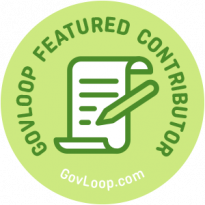Hosting events that are accessibile to individuals with disabilities is important. Different methods assist individuals who have a diverse array of disabilities, such as those related to sight, hearing, mobility, and cognition. Accessible events may also benefit people without disabilities.
An in-person accessible event should be held in a physical space that is accommodating to people with disabilities. When choosing a location for your event, consider the following:

- Locate your event close to public transportation and taxis. Event information can provide directions regarding how to travel to the event via public transportation.
- Provide parking that is reserved for people with disabilities on-site and/or nearby.
- Have ramps.
- Have entrance buttons, wide doors and hallways, clear paths, and working elevators.
- Do not force people to go on stairs and/or an escalator to attend your event. If the event is not completely on ground level, ensure there are ramps and/or elevators.
- Have railings on ramps and stairs. There could be stairlifts.
- Ideally, have a lever-style door handle or automatic doors, not doors with round doorknobs.
- Carpets:
- Avoid a soft carpet, as it can be hard to roll a wheelchair or walk across a soft carpet.
- Secure or remove throw rugs and mats.
- Do not have small, abrupt vertical level changes where surface materials change (i.e. – from asphalt to concrete or brick to wood).
- Restrooms:
- Have at least one toilet that is for people with disabilities. Make sure that stalls have grab bars and raised toilet seats. Have wide stalls. Do not have mirrors, soap, and towel dispensers at too high heights. Have lever and wand-related handles of faucets. Faucets should not have handles that must be used by grabbing or twisting. Ensure that restrooms are large enough for a big wheelchair. Provide gender-neutral restrooms.
- If using portable toilets, ensure that at least five percent of units (but not less than one unit) be accommodating to people with disabilities.
- Provide a well-marked quiet room, which can be especially useful for people with sensory issues.
If locations do not have all these features, you can create/install at least some of them, such as ramps.
Site Visits
When choosing a location, conduct site visits with a colleague to multiple potential venues so you can see how accessible locations are. You may want to bring a ruler and a wheelchair to test accessibility. You may also want to take photographs.
During a site visit, you can use and add to the following chart (which applies to concepts of this piece and its follow-up post):
| [Location #1] | [Location #2] | |
| Nearby Transportation | ||
| Public Transportation | ||
| Taxis | ||
| Parking that is Reserved for People with Disabilities | ||
| Onsite | ||
| Nearby | ||
| Physical Features | ||
| Entrance | ||
| Type of door | ||
| Width of entrance | ||
| Push-button access | ||
| Ramp | ||
| Movement Between Areas | ||
| Elevators | ||
| Stairs | ||
| Stairlifts | ||
| Escalators | ||
| Railings on ramps and stairs | ||
| Non-Meeting Room and Bathroom Features | ||
| Handles on doors (not in entrance) | ||
| Rugs (i.e. – Soft) | ||
| Surface Difference | ||
| Restrooms | ||
| At least one toilet that is for people with disabilities | ||
| Toilet stalls – grab bars | ||
| Toilet stalls – raised toilet seats | ||
| Wide stalls | ||
| Height of mirror(s) | ||
| Height of soap | ||
| Height of towel dispenser(s) | ||
| Faucet type (i.e. – Lever, wand) | ||
| Large enough for big wheelchair | ||
| Gender neutral | ||
| At least five percent of portable toilets (but not less than one unit) be accommodating to people with disabilities | ||
| Quiet Room | ||
| If there is one/what it is like | ||
| Signs | ||
| Contrast | ||
| Glare | ||
| Language (i.e. – men’s/kings) | ||
| Well lit | ||
| Font (i.e. – Cursive) | ||
| Non-Meeting Room and Bathroom Features | ||
| Registration tables (i.e. – between 28 and 34 inches from the floor) | ||
| Scent-free | ||
| Meeting Rooms | ||
| Seating (Types, if connected to table) | ||
| Clear pathways | ||
| Lighting (i.e. – Natural) | ||
| Echo | ||
Final Thoughts
In-person events should be in accessible locations. Site visits can be useful in deciding an appropriate event venue.
Miriam Edelman, MPA, MSSW, is a Washington, D.C.,-based policy professional. Her experience includes policy work for Congress. Miriam’s undergraduate degree is from Barnard College, Columbia University, with majors in political science and urban studies. She has a master’s in public administration from Cornell University, where she was inducted into the national honorary society for public administration. She has a master’s of science in social work (focusing on policy) from Columbia University. She is a commissioner of the DC Commission on Persons with Disabilities. Miriam aims to continue her career in public service. She is especially interested in democracy, civic education, District of Columbia autonomy, diversity, health policy, women’s issues, and disabilities.





Leave a Reply
You must be logged in to post a comment.